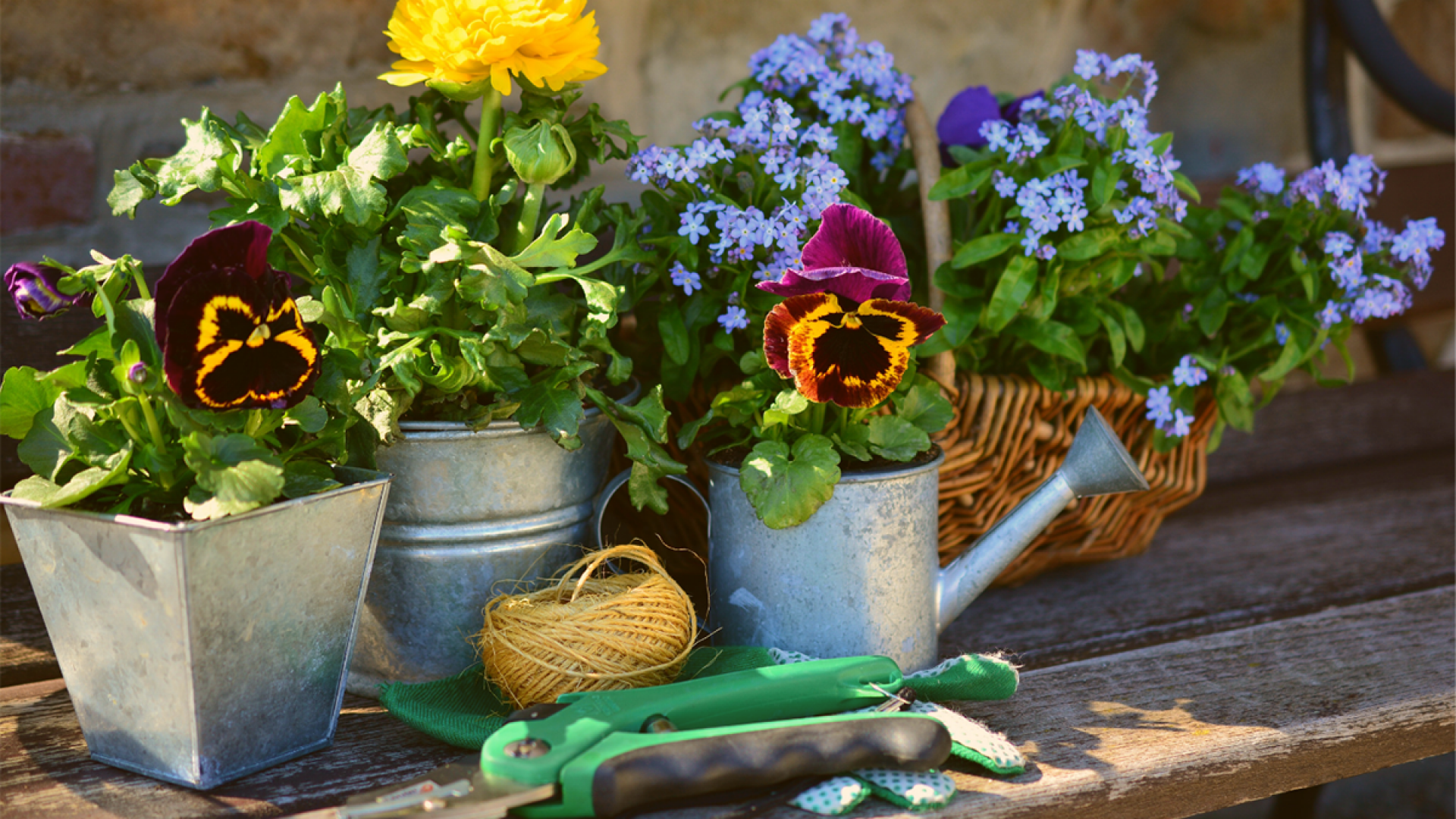To ensure a beautiful, blooming garden in the spring, arrangements must be made in the fall. Of course, there’s the regular business of weeding, pruning and tending, but did you know fall is also a great time to prepare your soil and even plant new trees and shrubs? Make the most of the cool, crisp autumn weather, get outside, and enjoy some quality time with your garden.
Here are six ways you can prepare your outdoor plants this fall:
1. Uproot Pesky Weeds – Out with the old, in with the new. Fall is the time to clear out any weeds, debris such as leaves, and rotting plants and roots that can damage the soil and cause plant disease. It’s also a time to use pre-emergents, which is an herbicide that will help prevent winter weeds like clover, chickweed, and filaree from sprouting. Treating your lawn and garden with pre-emergents, before the weeds germinate, will make the task of removing them in spring far less daunting.
2. Equip Your Soil – Get your hands dirty and embrace the scent of freshly dug soil. Fall is an excellent time to add soil amendments, such as manure, compost, peat moss, and bone meal, which can improve your soil’s texture, increase the state of micro- and macro-organisms, and correct the pH level for maximum fertility. Digging amendments into your soil during the fall season allows the nutrients more time to start breaking down and do their job before spring. Once you’ve added your chosen amendments, you can leave your garden be, or you can cover it if you’re concerned about drainage.
3. Trim the Trees – This is a wise practice not only for the prosperity of your garden in spring but for the safety of your home in winter. Pruning tree limbs in the fall promotes a healthier, better-looking tree and allows for fruiting and flowering. It also prevents trees from becoming too top-heavy and falling over easily in storms. If you’re going to prune your trees yourself, ensure that you cut limbs ¼ inch above a bud at a 45-degree angle – doing so will help prevent water damage, disease, and ensure healthy regrowth. For thick tree branches, we recommend consulting a professional tree service company. To further prepare your evergreen and deciduous species trees for winter, ensure they’re well watered before the ground freezes.
4. Tend to Delicate Flowers – Don’t let your tender flowers shiver at formidable frost – bundle them up! Flowers like roses, fruits and vegetables, and annuals such as impatiens and roses won’t survive temperatures below 55 degrees. So when the forecast starts showing signs of dropping temperatures, cover those flowers up with old sheets, burlap, or even newspapers or cardboard boxes. We wouldn’t recommend plastic covers since they requiring removing when the sun comes and if they’re left on can “cook” your flowers. Fabric sheets and burlap are perfect because you won’t need to remove them until the weather starts warming up in spring. You may also want to cover your most prized trees during the winter season as they too experience stress from below-freezing temperatures. If you do choose to wrap your trees, we recommend spraying with an anti-desiccant and wrapping the trunk with crepe paper designed for trees or a plastic rabbit guard to avoid sunscald.
5. Prune & Mulch Your Perennials – Perennials, the definition of a plant that lives for more than two years, are worthy of your time, love and attention since they’re the ones that show up each year. While hardy Georgia perennials such as blue false indigo, stonecrop, garden phlox, and Siberian iris don’t require extensive winter preparation, there are things you should do this fall to ensure they’re looking their best come spring. Start with layering about six inches of mulch around your perennial plants once the ground is frozen to protect the crown and roots from frost. Next, prune your perennials. While it may be tempting to trim all your plants in one go, some perennials prefer to be pruned in different seasons. Perennial flowers that benefit from a fall trim include bearded iris, bronze fennel, painted daisies, and peonies.
6. Mulch, Mulch, Mulch – There are many benefits to laying new mulch in fall – it reduces drainage, wards off weeds, helps to control soil temperature and moisture, and it has all winter to break down and provide your soil with fresh organic nutrients in spring. Plus, this labor-intensive task is far more comfortable in colder weather and provides the perfect excuse to spend more time outdoors in your garden before winter!
7. Plant New Life – Fall’s cool temperatures make it an excellent time to plant trees, shrubs, and perennials. Why? Because the soil is still warm, and there’s still enough time for plants to establish roots before winter’s dormancy and the stress of summer’s heat. For best results, water your plants often to ensure they’re receiving adequate moisture. The best plants to grow at this time include cool-season vegetables such as spinach, parsley, lettuce, radish, and kale. Pick a spot close to your home so you can water them daily and harvest easily for fresh garden-to-table meals.




